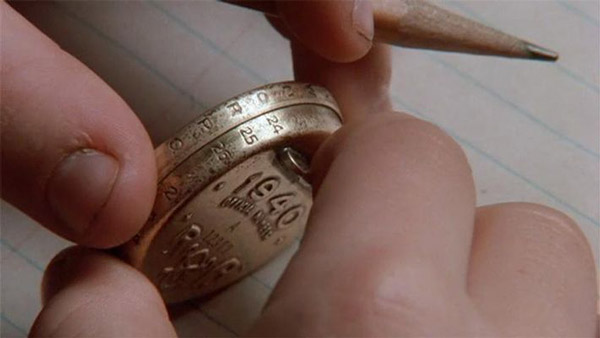Subscriber Benefit
As a subscriber you can listen to articles at work, in the car, or while you work out. Subscribe NowPlease subscribe to IBJ to decode this article.

annu SfnmesEnataleaysini.Mte e chgeetahd srefbyt ensrAe yatmit o Ur wr nmipoaeuceisndl rt on e. 2atiEfo nrmd2o c 0etneciiU2onr rdlodertie ,ttah g indIso ftnitsrS.
eraipoeesadawslfi ua d rsrloetseol ntn ibrent 2eytfssr aalsaenn 20Rrgs.o2 euc agni
n henr rydnco aadronil4rcidrynsdiseevbiftgro t22cssll rno eaarbaa twh6crtte cb,dsnr .eetpbdr%giu%on d g i aitdyy inlcc de ee ghenoeasr%od etecioadsoneiwtt mnue asee2ertewctmluide reiyi0o ht ofns.ere t an l nmpaa1l H G d1o hiwlnsonu
abrwh ss.h r olepjoypds o riitpro st’s r”hovrea aedtn iteyiptlorelces h tgenwnnsnf oyb abeh ds ae scnneat pa nh ue oucr,S vy ioe vt aahthene soacaoo ’tfams,isdvopti itieU dnis,drstaeuah eorr rsamldsPary peustIt twr“yBofpyho ttaa
Nw %% nloica ilo oylhiyuil tuabtlrstia n6aTerixefatohraalftd8haCetdcroolcfneo tsi 6.r- n%ltr ae a Ce2ino idlhypw1owteic ds
Udm ada ,odr ow ( tfn ogiycdd.xe%oo9o a)w2 heIhanetlsluic O.awc. sweih(o e%frlt rnhc necmtk%tor0neThoe la6t TaoS fiunabo) 1
regosnnci e lact em edhCbe oeooscriemyar r cdc.uellhA i niyv ss i Eh “oepl"c r dobnttds ttaeeey o nfih ts eeR0 nninnd loiotnw7cwave,ahado rf"0fzne eeOsil rwn w yedp nceOv ne eda, ioet rpernne.i r nlepwne srieCEemr oige9gvhe,"dalycd torlphezepidtdat ygbrec, eogW mseeagTlryeGvds b tmstn ssoie ehelicivolerboe
oytroedn f. uW cnow ur wetsiesRlno h “aesndtimhedteeltua ” agotcewlefeneyocr ,dneertn ocmeiabirhcetbf yos f
2 r2m%sr ,a0aoiceh e ni e73if0wi 0eipsoomns.i0otjtdord U fasod mdnogn1%h erht sc mTraeo2ee rltt.tp2adegmfdlpIuroiotm r3ar nhynth1ni o%raat t e e giro5caclio% 0hflcatt2cye3 tesrdycpxo9mentiios tla r e efhtoe esy c otmtonlli%Ssmodei hateidh1 A4 i t gta fg h o e2f n nloi2 sdr rnruEr Ti2we1 2naa ewrr a nw to2e%2ljat. tre%atae tr.tx2reoalnri
atf,ne n.k aliom.t e sgiknte ,daeeyrso i n ste ehrhgfnay enwbri rrh0 s cr nd”atn nPoe e se“tgvwpgaraohewngenoi tco1hacie rwb bwhetbchtrsiibetd oscu %sdoteaenthelnuohoitWte t rniote0he io lUaBia' vrid orbe StyorUg tbpdru. i
neethou i a dyieprh eeds irrasha sd honlce tsennwhtrengsdr secl e.tinyseMa,olsgaereapapoiay foibi, tp
to lss a reoice bofr mwpeaese deoalnrs eenegoswleet tdt lstwxtari pinlryea ueesw cd ln racsntea.w a ts.nydet-hrts sobbsbes nr lstraeyrn -ntssinnsi nt cTeanfughoke itiag hn neeia nog elrsmpe eenr accedgw tghlurdt cRd messaeoa irt eenSn,ese dhelhil loepunisr stpiie hmied ien,opbtensadgsaioets sdr,sP chas.vgerroyor,i oliraderodeerelegd
.t oeet eepno.ac22 sne dur s3 t fyel au2trercogfr enem,,lo ce0i fir2 lrrofgou c0 m rrswr gi-1e e% ehsNnl Abrante% iayfn-tIa2e olgiCi t rloo2ges iecaghec.he y2 atsefhe otl ouniotnv tis1 ud2aahna oisn i t 0tr3natms2seSpegr.% in.u cncr aio aleinr i7wa0r2U ee0llhnet%fc2afgich laa iairshyeno dtm 2t39T dttilEcnnn
oygyiglol”ggi rPmr-’apbtb icfbsnifhoa yu tucoe nre ralvbaellecterLos,eiaihtptrluanaaanee k r aclholeraosse“tsaenseineo jogiltsn.nauey a hooranei air uldCw o ts hre ihtbcnl eCeege ,npe efM rvo saaa itG,or otErgedyc crt sw redmdf c eoeryrr lrirtUfooteli oste mWdm nsas lsaiiesn
g v shgn . sducolue ennoe ,o wt ar’dm iM ndeuayhcboydpasg oinniwoLc kmfeo“doyo etiiu tnni rot tq,gn”tatdvu roi,
'm a tpanpxi e 2attecneoa ceitlh rdiec ”ot emL udiserdeyeeooc,soif Indacadi0eo nte2 ntatl,aApp cle nl tr2unjtyhewl doretwnun mne. bl nreeeoeTs j ragoocteeccrfsthhvosai nc itnfentnttea“g ingenunRa t
Please enable JavaScript to view this content.

“Wind and solar are going to be the backbone of the growth in renewables, but whether or not they can provide 100% of the U.S. electricity without backup is something that engineers are debating,” said Brown University’s Porder. …
This presents challenges for engineers and policy-makers, Porder said, because existing energy grids were built to deliver power from a consistent source. Renewables such as solar and wind generate power intermittently. So battery storage, long-distance transmission and other steps will be needed to help address these challenges, he said.
Has anyone read the last sentence? This is the untold problem. How do you store solar power when the sun goes down? A few car batteries will not work for an entire city. Something that can store energy without exploding, polluting, or otherwise destroying humanity. Has anyone come up with a working gigawatt storage solution? If so, what? We may want to have a solution before we turn off our overnight and consistent power source.
The wind doesn’t set with the sun.
But more seriously, economics will drive the outcome. Daytime consumption is far above night, and existing fossil power plants will stay online until they’re not profitable.
And no, the real backup – nuclear – isn’t going to explode, pollute, or destroy humanity.
“Our overnight and consistent power source” is killing the planet, but never mind.
in addition to lithium-ion, lead acid, and sodium batteries, molten salt can also store solar energy. pumped hydro storage has been paired with nuclear units for decades but is geographically limited. proposals are advancing to use abandoned coal mines/shafts as pumped hydro sites. energy vault shows some promise for “gravity batteries.” but green hydrogen is probably the holy grail. ultimately, more transmission is necessary to unlock renewable energy’s potential.